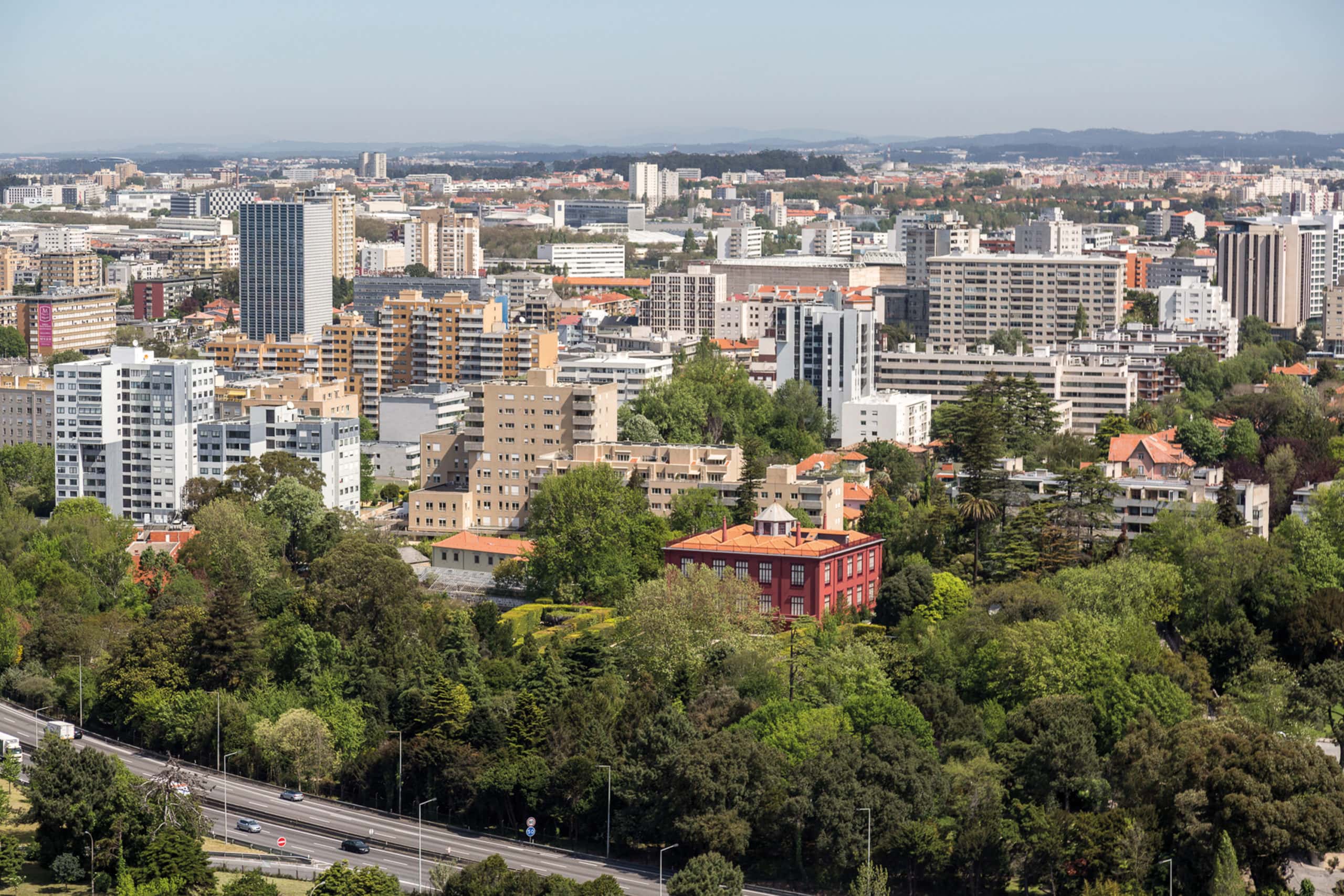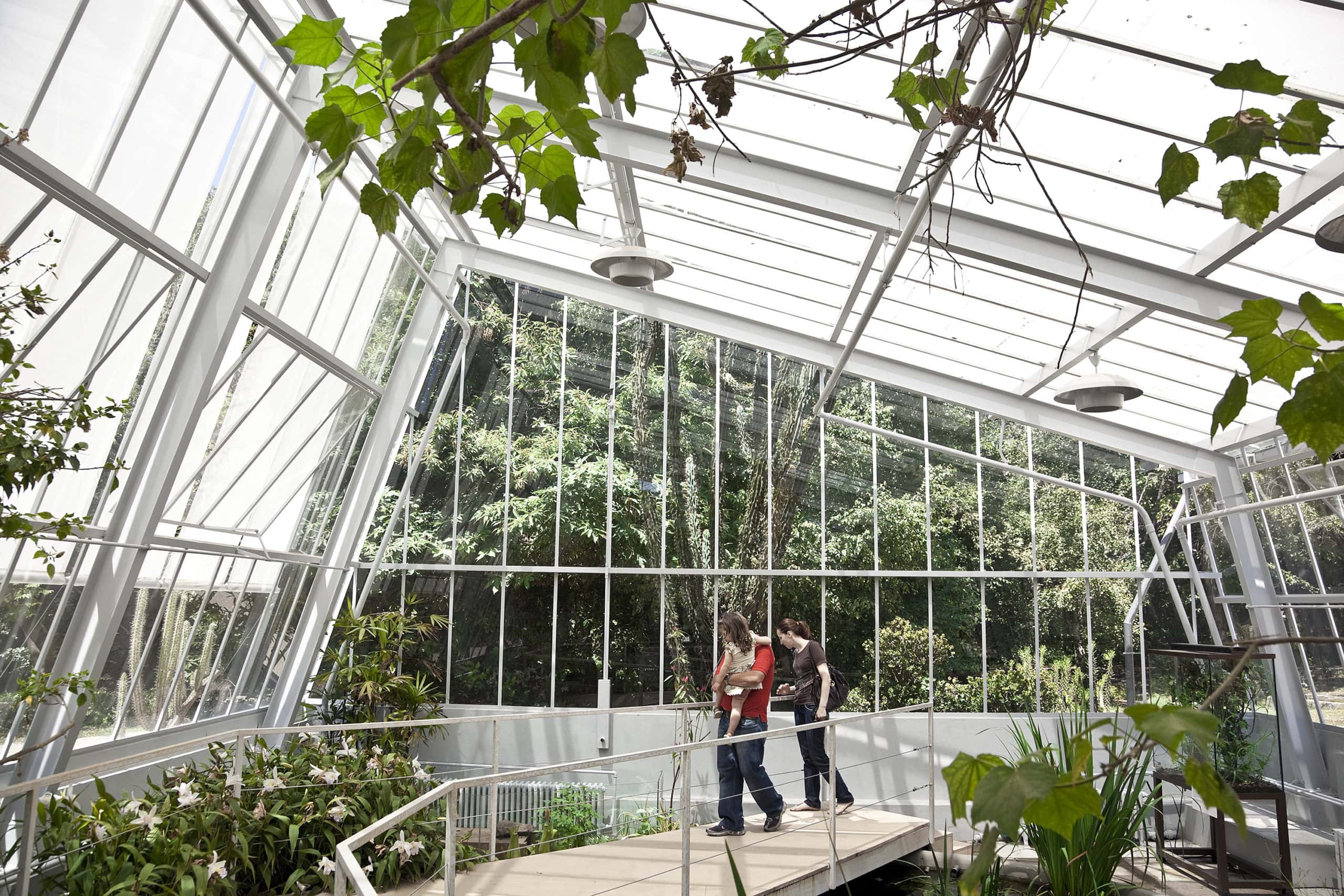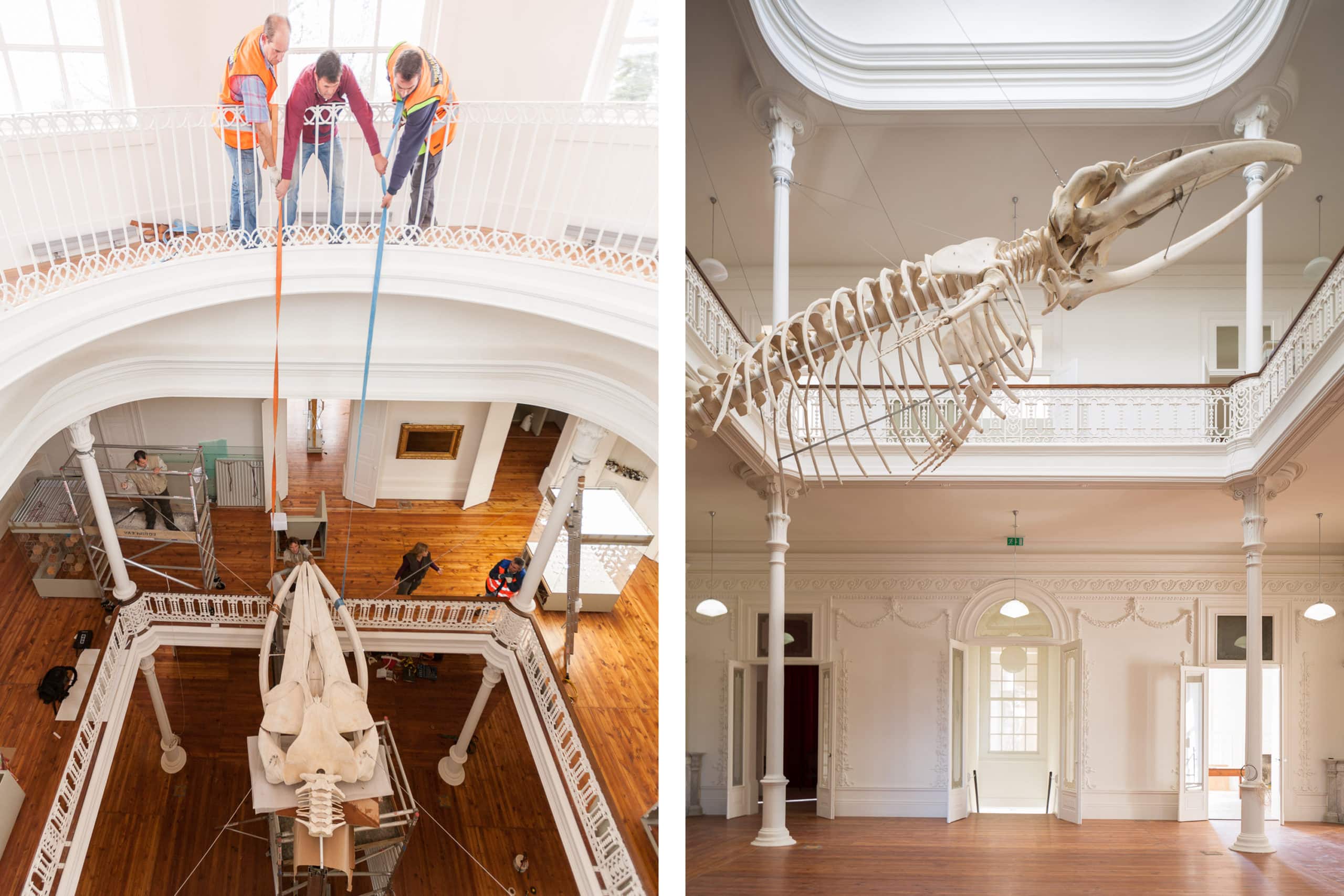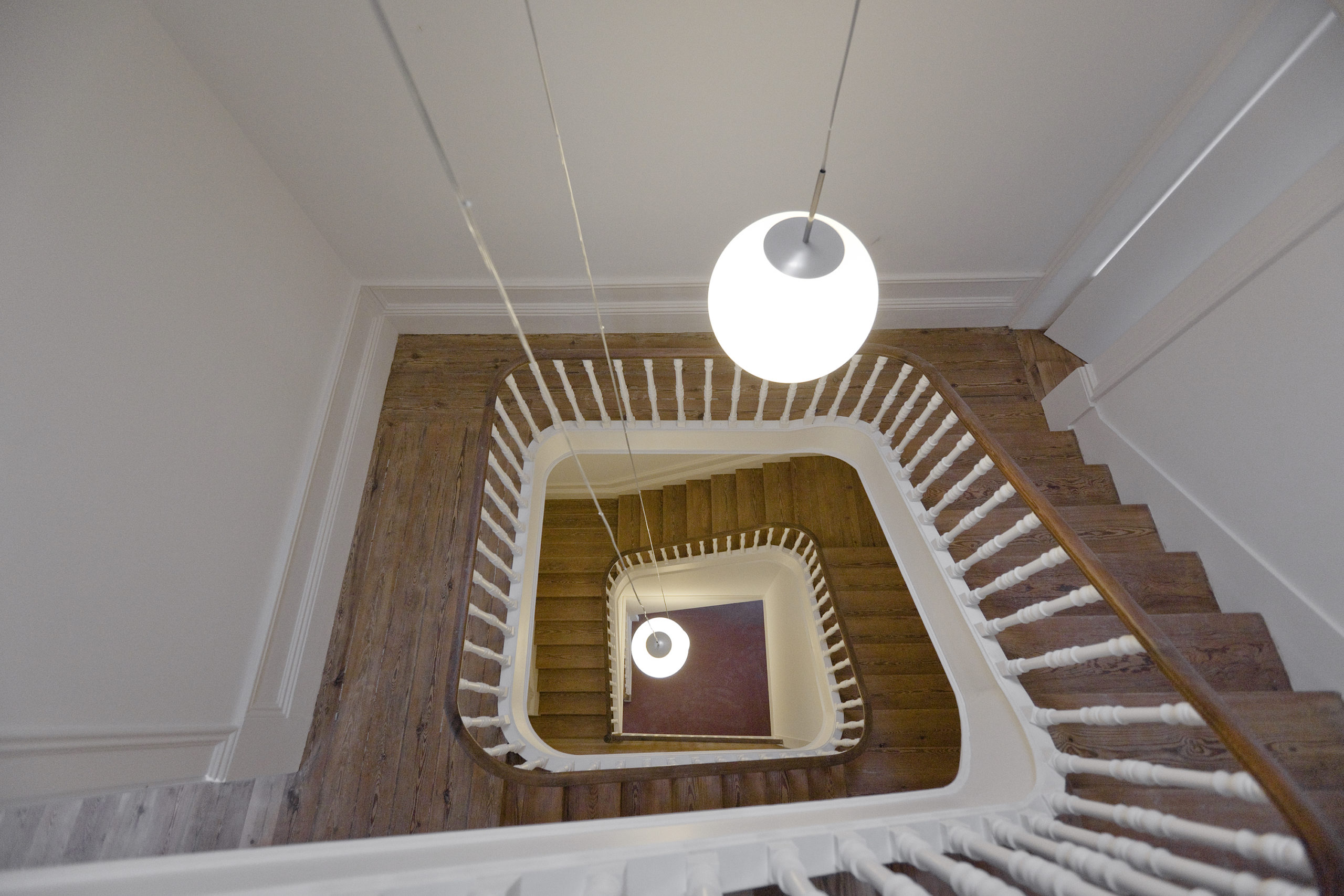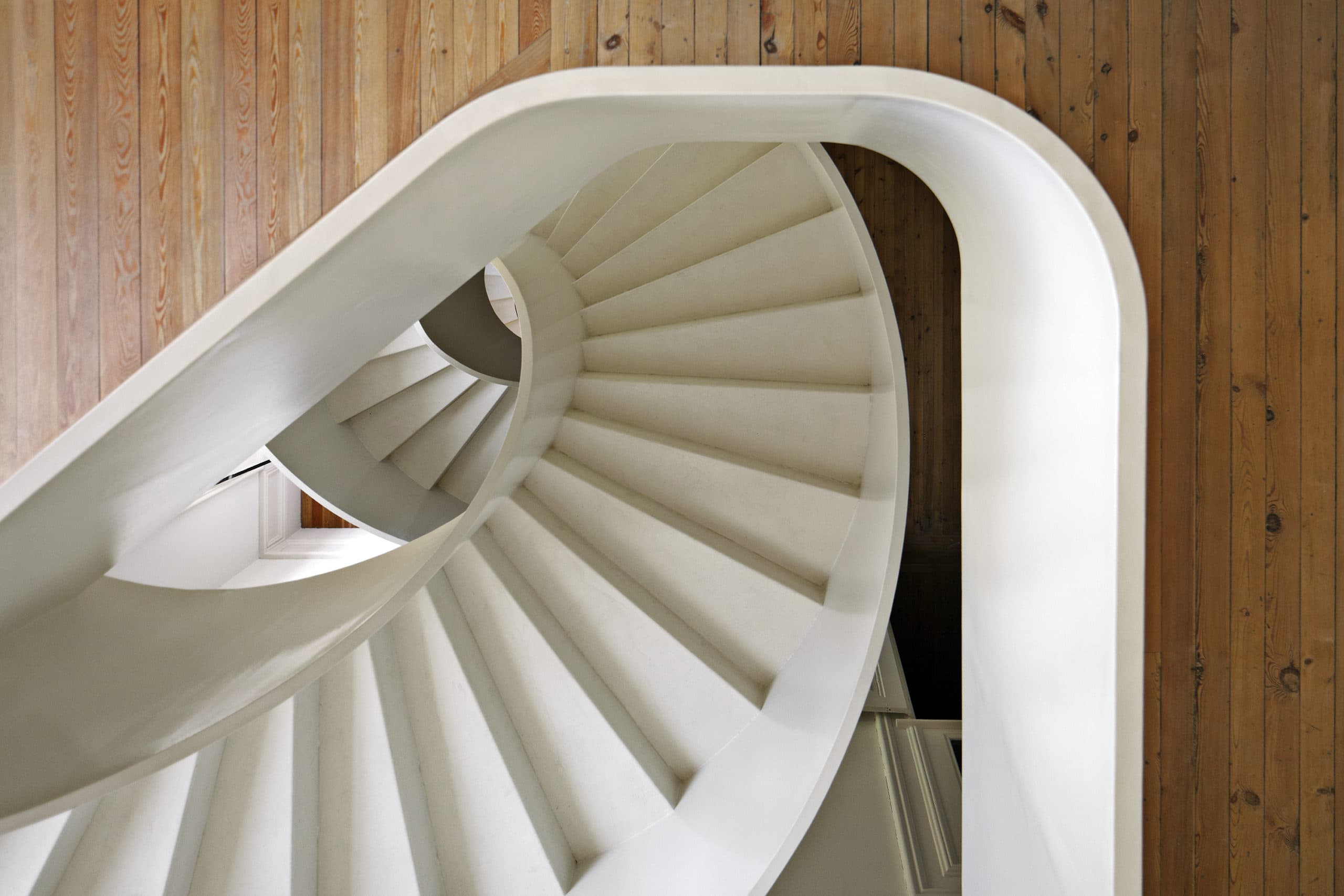The Andresen House is a unique building in its architecture and exceptional in its interior space, natural lighting, scale and relationship with its surroundings – the Porto Botanical Garden.
It is located in Rua do Campo Alegre – an old road parallel to the Douro River that connected the city centre to the sea, and has a gross construction area of 2300 m2 distributed over 3 floors.
The garden area where it currently stands is 47600 m2 and is part of a group of buildings that include the old caretakers’ house – Salabert House, and a group of greenhouses.
The celebration of the centenary of the University of Porto and the possibility of hosting the important international exhibition, Darwin’s Evolution, about his life and work, provided the first phase of rehabilitation, extending the intervention to the greenhouses designed in the 1960s by Karl Franz Koepp.
After the dismantling of the exhibition, a second phase of the project took place between 2014-2017, with the aim of definitively installing the Biodiversity Gallery, a pole for research and permanent and temporary exhibitions that is linked to the museums of the University of Porto.
The Andresen House currently has the modules and equipment designed to fulfil the museographic programme directed by Jorge Wagensberg and Hernan Crespo and created by the designer Luís Mendonça.
From the beginning, the director of the museums of the University of Porto, Nuno Ferrand, dreamed of returning the white whale of the Faculty of Sciences to Andresen House, as in the passage of one of Sophia de Mello Breyner Andresen’s short stories.
Perhaps it is commonplace to find a whale skeleton at the entrance of a science or natural history museum. However, in none do we see fulfilled a poetic prophecy such as the one Sophia wrote:
Everything in the house was exceedingly large from the bedrooms where the children rode their bikes to the huge atrium into which all the rooms led and in which, as Hans put it, one could set up the whale skeleton that had been resting for years, packed in numerous volumes in the cellars of the Faculty of Science because there was nowhere to put it.
“A Saga”, in “Histórias da Terra e do Mar”, 1984
